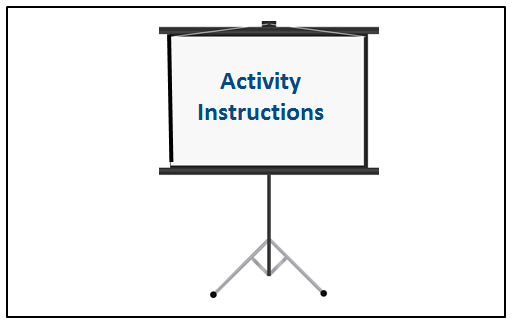Have you ever been to a talk or workshop that started out so sloooooooowwwwwly that all you wanted was for the presenter to get on with it?
Introductions that draaaaaagggg on with presenters touting their credentials, bragging about how they made their millions, or nervously proclaiming “It’s great to be here!” (really?!) lose the audience pretty quickly and douse any flames of excitement they might have had before coming to the session.
Why not surprise your audience with a great introduction that starts off with a bang …not literally, of course!
People tend to remember what they hear first and last (the laws of primacy and recency) more so than what they hear in the middle.
Your job then is to grab your attendees from the get-go with a great introduction so that you hook them to every word, activity, and thought you share with them.
Today I’m going to share with you oodles of techniques for starting your workshops, talks, or retreat sessions off with a bang. I’ve used them all, and of course, I have my favorites. So I’ll be starting with those.
I’ve also put together a list of phrases for grabbing your audience — options for what to say — and definite don’ts… what not to say.
Click here if you want a copy of that list.
My 3 Favorite Strategies For A Great Introduction
Strategy #1
Strategy #1 is making it all about them. “Them” are your audience members. You want to hook them in with the very first sentence out of your mouth.
I learned my favorite opening line years ago from an article by Speaker Hall of Fame sales trainer Patricia Fripp. I still use this opening at the beginning of almost every workshop I lead.
I start with, “You have an awesome responsibility!”
It’s a strong statement that peaks the interest of the attendees and they’re all ears…What does she mean?
I then segue into what that responsibility is, and that of course depends on the audience and the topic.
If you’re a financial planner or an online marketer addressing an audience of independent consultants, you might say, “You have an awesome responsibility to provide for your family. To make sure there’s more than just bread on the table… to …”
If you’re a relationship coach talking to a group of single adults, you might say “You have an awesome responsibility… to find your soulmate and live happily ever after.”
If you’re a fitness or nutrition coach, you could say “You have an awesome responsibility to be in the best health you can be… so you can easily and happily play with your children and grandchildren.”
I then follow up with “…and here you are — looking for some help so you can meet your goals. I’m here to give you guidance; I’m here to give you concrete strategies, and I’m here to give you step-by-step how-to’s …so let’s have a look at the agenda for this workshop…”
Strategy #2
The second strategy that I love using is a personal story. People can’t resist a good story. They look at you expectantly and are immediately attentive.
How do you find a good story to tell?
It does require some work in that you have to dig around in your memory to find the experiences that illustrate your point, but once you’ve got a few stories, you can use them over and over again.They become your signature stories.
Look for experiences you’ve had with clients, students, colleagues, friends, shop clerks, family members, authority figures, and so on.
The best stories start with an unexpected complication and end with a successful transformation. Look for situations where you experienced and overcame challenges, obstacles, aha moments, fears, or needs.
As a speaker/facilitator for well over 20 years, I’ve had many interesting experiences and there are a few that vividly stand out in my mind.
I usually start off with “I remember it like it was yesterday. There I was in Rome Italy. It was a rainy day..” This particular story is about an experience I had a number of years ago teaching a workshop in Rome. It was a presenter’s worst nightmare. I go on to describe the problem, and then I segue into how this session is going to help them navigate and solve that particular type of problem.
Strategy #3
The strategy that I like the best is getting my attendees engaged in an activity as soon as they walk into the room.
Are you thinking …”Wait a second. They haven’t even had time to get settled yet. They’re carrying their coats and their backpacks/briefcases/handbags and their cup of coffee?”
I know, I know. I get them going anyway because I strongly believe in the benefits of getting them involved right away.
Benefit #1 is that the session starts on a high. You hit the ground running and set an energetic tone.
Benefit #2 is that it creates buy-in right from the get-go. You’re planting seeds right away by having them thinking, acting, and talking about the topic… and as a result, your audience members immediately become invested in the session.
Benefit #3 is that you’re sending the message that “This session isn’t going to be ordinary or boring.”
Benefit #4 The most important benefit is that it sets a “participation” expectation. You establish in the participants’ minds right away that they are expected to participate. The earlier you do this the better. If your audience members are in a passive mode from just sitting back and listening and if you wait too long before getting them involved, you may have to wake them up…

…when you ask a question or give them an task to do — because they weren’t expecting to participate.
I want them to know that my session is going to be different. I call it Setting the Stage Before Taking the Stage… and my favorite activity to do that is ..
A puzzle activity… I get lots of great feedback about this activity. You’re free to use it to create your great introduction!
Puzzle Activity
Step 1:
During your preparation, plan some session-related discussion questions. Don’t get into anything heavy. Make the questions easy so that your audience members can get to know each other and start talking about the topic.
Examples:
- What do you do? Where are you from?
- What interests you about this topic?
- What problems or challenges are you having (or anticipating having) with _________?
- _________ (controversial statement) Do you agree or disagree, and why?
- __________(statement) Do you believe this is myth or fact?
Step 2:
On an 8 x 11 inch piece of paper, either write out each statement/question by hand or print it out from your computer — 1 to a page. Use large font.

Step 3:
Cut each page up into a maximum of 4 pieces. You now have the puzzle pieces.
If you are expecting 40 people, you would use 10 questions or statements. You can also create duplicates if you wanted to have more than 1 group working on the same statement/question. It’s always better to have more puzzle pieces than expected attendees just in case the number of attendees changes.

Step 4:
Shuffle the puzzle pieces and place them in a box or clear plastic bag.
Step 5:
Prepare a slide or easel page with the instructions for the activity. This will save you having to repeat the instructions every time an attendee enters the room. You’ll only need to welcome them and direct them towards the slide or easel.

Step 6:
As the attendees come into the room, have each of them pull out a puzzle piece and find the others in the room who have the pieces that fit with theirs.
Step 7:
Once everyone has arrived and if any of the groups are missing pieces of their puzzle, suggest that they search in the pool of leftovers. You might be holding onto the bag or box of puzzle leftovers; you might have an assistant handling it; or you might spread the leftovers out on a table.
Step 8:
When you’re ready to start the session, ask the attendees to take their seats. Segue into your introduction … using strategy 1 or 2 above or any of the phrases that follow below.
Don’t debrief the activity yet. You can link to the exercise, as applicable, after you’ve made your impactful introduction.
What Not to Say As You Start Your Workshop, Talk, or Retreat Session
There are a number of boring starter phrases that are almost guaranteed to lose your audience immediately. Your attendees have heard them many times and they just want you to get on with something more interesting.
These phrases are a sure giveaway that you’re nervous and are using stalling tactics.
- It’s nice to be here! (No, really!?)
- Thanks for inviting me. (You can thank them later on during your talk.)
- How about those Raptors / Yankees / Dodgers! (or other sports teams)
- It’s hot / cold outside. (or any other comments about the weather)
- Is the microphone on? Can you hear me? (They’ll let you know if they can’t hear you.)
Also, don’t bore them right off the bat with your bio / resume / credentials.
They don’t want to hear about you — about all your accomplishments and how you made your millions. They want to know how you can help them.
If it’s relevant, you can segue into your bio after you’ve made your initial impact and grabbed their attention. After you’ve impressed them with your impactful beginning, they’ll be interested in your bio and credentials.
Should You Start Off With A Joke?
The late great Danish-American humorist and concert pianist Victor Borge said “Laughter is the closest distance between two people.”
People love to laugh and humor creates a connection between people, but…
Start with a joke or humor ONLY if…
(1) it is relevant to the session, AND
(2) it is tasteful and doesn’t offend anyone, AND
(3) it is expected (because people know you, your personality, and your topic)
If it doesn’t meet these criteria, the humor will probably fall flat and be awkward and embarrassing. It’ll also look like you’re trying too hard. If you plan on starting with a joke, be sure to run it by a few other people beforehand.
Lastly, re humor,..if it’s really important to you that you start off with some humor, search the web for a funny image or video that you can use — but again, it must meet the criteria I’ve just listed above. If it’s not 100% relevant, find a way to link it to your topic.
6 Ideas for Strong Openers
1. Make a bold, dramatic, or controversial statement.
Examples:
- You have an awesome responsibility…
- I have a confession to make.
- Throw away your PowerPoint slides!
- Meetings are useless!
2. Recite a relevant quote from someone famous. Find quotes on websites such as brainyquote.com .
Examples:
- I have a dream! – Martin Luther King
- The biggest single problem in communication is the illusion it has taken place. – George Bernard Shaw
3. Tell a relevant story… and start it off dramatically.
Examples:
- “His name was Jacob…”
- “I remember it like it was yesterday. I was in Rome, Italy…
- “Imagine this scenario. You’re …”
4. Quote a surprising statistic related to your topic. “Did you know that…?”
5. Comment on something in current events that directly relates to your topic.
6. Use lots of “You / Your” instead of “I / Me.”
Conclusion
There are plenty of great ways to lead into your workshop, talk, or retreat session. Make the beginning of your session engaging, interesting, and memorable. Remember that what you say first sets the stage for your entire session.
Check out our Engaging Talks and Workshops Online Academy here.
***Comment below with your favorite way to start a session – a technique that you’ve used or one that you’ve seen others use.

I love these strategies and this blog post is more detailed than any I’ve seen on this topic. I like to start by asking the audience a question, such as “What do you expect or hope to get out of this session?” or a question specifically about the topic. It gets people to pay attention.
Thanks Ellen! So glad you love the strategies. I like your question…It also helps us, as presenters, get to know our audience members a little bit.